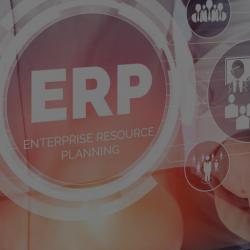To automate the Planning and Budgeting units, it is proposed to use the 1C: ERP. Enterprise Management, 1C: ERP Holding Management, 1C: Holding Management and 1C: Integrated Automation functions. The solution makes it possible to integrate the strategic goals of the enterprise with financial and economic plans to achieve them, reduce the time and improve the quality of planning and operational analysis of budget execution.
Main capabilities of the Planning subsystem
- Planning support:
- Sales;
- Production;
- Procurement;
- Assembly and disassembly of goods;
- Prediction of remaining products.
- Coordinating the activities of departments with the help of prepared plans;
- Preparing plans with different planning horizons and periods;
- Developing detailed plans fueled by enlarged plans (for example, monthly plan split into weeks, etc.);
- Use of various data for drawing up plans (for example, system or external data);
- Setting up various formulas for calculating plans;
- Modeling various scenarios for the event development, including:
- Optimistic;
- Realistic;
- Pessimistic.
- Correction of plans, including using the technique of sliding rescheduling, when the new plan clarifies or completely replaces the older one;
- Managing process for approval of plans using the statuses and versions of plans;
- Forecasting the demand for goods using the methodology of assortment planning and distribution standards, including the demand for new products;
- Automatic accounting of seasonality in sales plans;
- Account of the probability of materials record under the production plan;
- Automatic calculation of the need for resources under the production plan, including given the necessary semi-finished products;
- Generating orders to the supplier / for production / for assembly (disassembly) / for transfer to production under the purchase / production / assembly (disassembly) plans.
Key features of the Budgeting subsystem
- Control of commodity planning processes;
- Providing business users with a list of necessary classifiers, analytics and indicators for the development of budget models and reporting sets for various purposes;
- Forecasting the dynamics of indicators, using various options for calculating, consolidating and distributing indicators, using mechanisms for reconciliation and exclusion of intra-group transactions;
- Regulation of the budget process and the distribution of responsibility between its participants, the use of routes of any complexity to coordinate budgets;
- Automatic user notification of the approval progress.
Key benefits
- Predictive assessment of the financial condition of the enterprise and its structural units, given various financial and economic factors;
- Operational control of financial processes;
- Strengthening financial discipline;
- Setting the goals of the enterprise for a certain period of time, determining ways to achieve the goals, resource support;
- Flexible tools for obtaining both detailed and consolidated data;
- Reducing the time and improving the quality of planning and operational analysis of budget execution;
- Making operational management decisions powered by up-to-date and structured financial information.
Branch
Platform


